September 11, Wednesday
Destination: The Sacred Valley
Accommodations: VILLA URUBAMBA
Activity Note: We will spend the day at elevations above 9,000 feet. We recommend staying hydrated while at high altitude.
What an amazing day we had today. It was set up so that we would immerse ourselves in many cultural experiences throughout the day as well as the opportunity to discuss controversial topics with the people. It will promise to be a Day in the Life of Urubamba, a town of around 2,700 people and the largest community in the Sacred Valley.
Our first stop was to visit a woman who grows coca leaves. Coca is a plant filled with mineral nutrients, essential oils, vitamins, and to a lesser extent, some pharmacological effects – one of which happens to be cocaine. You can extract the cocaine through a very complex process, and the drug cartels can buy the leaves from the growers to do just that. They would pay double the price that a grower could get at a market, but most growers stay clear of the drug dealers since they know it would be a miserable life to get involved.
The coca leaf has been chewed and brewed for tea for centuries among indigenous peoples in the Andean region – and does not cause any harm and is actually beneficial to health.
When chewed, coca acts as a mild stimulant and suppresses hunger, thirst, pain, and fatigue. The farmers chew it all day to help give them the stamina they need to work the farms. It also helps overcome altitude sickness. In addition to the above, the coca leaves are considered sacred in the indigenous cultures.
Interestingly, because of its stimulant effect, the coca leaf was originally used in the soft drink Coca Cola but in 1903 it was removed and a decocainized coca extract became one of the flavoring ingredients.
The coca leaves can be harvested three times a year, but the growers are only allowed to bring 6 lbs of coca leaves from their farm during each harvest. The government takes 80% of the crop to try to control the selling of the leaves. The lady admitted that she smuggles more than the 6 lbs by putting the bags into the pockets of her apron or hiding the bags under her clothes. If she gets caught, she has to pay a fine. She doesn’t want to smuggle too much at a time because if the guards find out, they will watch her constantly. Her daughter helps with the picking and bagging of the leaves and since the guards do not know she is her daughter, she is able to take an additional 6 lbs and smuggle a few more as well. They will also ask people in the bus that they take when they are returning from the field, to take a 1 lb package and most folks will do it. Since they are allowed to take 6 lbs, one lb package isn’t a big deal and the person can get by the guards with ease.
We had the opportunity to chew some of the leaves and the lady mixed them with stevia leaves to sweeten the taste. If you chew enough leaves in a day, you will have a positive drug test for cocaine.
After we thanked the coca lady, it was off to the market. We were lucky in that today is Wednesday so the big market was the one we could visit. It was unbelievable! Gorgeous fresh fruits, vegetables, herbs, meats, livestock, guinea pigs, all for sale with people buying and selling all over. Most people do not have refrigeration, so they go to the markets twice a week to stock up.
Patty gave us a task. She gave us some sols and she said we had to shop for some food items to bring to the home luncheon. We were divided into teams of four and Patty told us in espanol what we had to purchase. I had to ask her many times to repeat it and she said we can’t look it up on google. Just do our best. We finally were able to pronounce the name, but I have since forgotten it. I went around to each stall and said “Por favor. Donde es _______(whatever the name was). The people we asked understood and pointed us to the correct stall. We finally arrived at the stall who was selling what we needed and she asked how much we wanted. I showed her my sols and she gave me the proper amount. It was an herb and it smelled like peppermint. We all succeeded in purchasing what Patty wanted us to get, so off we went to the local school.
But…we didn’t get on the bus. Instead, Patty gave us money to catch a cab – one of those little cabs that zoom all over the place. We got in and told the driver where we wanted to go, praying he understood our Spanish. He did and we arrived safely although the ride was harrowing.
The bus picked us up and took us to a local cemetery. People with money can afford beautiful crypts high up and poor people are buried on the lower levels. Some of the crypts were interesting to see as the crypts had items in the window to depict what the person liked in their lifetime. One window had two bottles of beer.
We left the cemetery and visited a local school which is supported in part by the Grand Circle Foundation. Grand Circle has donated over $34,968 since 2017. Over the years, Grand Circle Foundation, along with the generosity of travelers, has helped to provide a wide array of items for the school including helping to build a kitchen and supplying it with pots and utensils. Now, the parents come and bring food to cook and the children get a hot lunch every day. Many of the students come from impoverished circumstances and must walk one or even two hours to school. The government doesn’t always provide adequate support, so they depend on travelers to help them out with supplies. We all brought school supplies for the kids – Allan and I brought mechanical pencils in different colors that were a big hit. The children must remain in school up till the sixth grade, but many do not since they are needed to help with the farming. The government doesn’t have the time or the money to check up on whether a child is in school or not, so the parents can make the decision to either continue with the schooling or not.
When we arrived the children ran out and grabbed our hands and led us into their second grade classroom. My little one was named Valentina and she wanted to know my name. We colored together and she told me what areas to color and what colors to use. She was adorable and she hugged and kissed me when I left.
The children sang a song for us and after we handed out our gifts, we had to say adios. It was a wonderful experience. But not before Patty brought them rolls and bananas for them to enjoy.
Next, we visited the home of a local family in the Sacred Valley, where we helped the abuela or grandmother, cook some tortillas. Then we all sat down to a delicious soup, rice, a sauce that went on the rice, the tortillas we made, avocado, corn on the cob and….GUINEA PIG!!! Yes, most of us had a taste, including Allan and me and it was really quite tasty.
The abuelo of the family (grandfather) sat at our end of the table. He was just sitting there and I felt badly since we couldn’t talk to him because of the language difference. So… I bright up my trusty Spanish translation app and I started asking him questions. How many children did he have, how many grandchildren. I told him how many children and grandchildren I had and he was surprised. I was actually able to do that without the help of the app. I asked what he did for a living. He is a farmer. What did he grow? Broccoli, onions, etc. Did he have help tending his farm? Yes, his familia. I told him I had a guinea pig for a pet. He was surprised and then I told him I’d have trouble tasting the one on the table. He laughed and understood. Dick wanted me to ask what sports he liked…soccer and basketball was the answer. And he told us his favorite team.
When it was time to leave, I said to him “Abuelo, gracias por hablar conmigo “. And he smiled and nodded and said “De nada”.
On the way out, we saw the guinea pigs that were being raised for the family to eat and to sell. Poor little guys didn’t know they would soon be featured on the dining room table.
On the way back to the hotel, we stopped at a local chicheria or bar, to sample the popular local beverage chicha. These establishments are all around, but they do not advertise. They are signified by a red plastic bag that is perched on the ends of a pole in front of the chicheria.
Chicha is made from corn which is dried out once it begins to sprout. Then it is boiled for two hours in water. Next, more corn is added and the mixture is boiled for another hour. Then it sits for two days to ferment.
While we were in the chicheria, workers were coming in from the fields and drinking huge glasses of the chicha, and even filling up bottles to take home with them.
We all sampled some of the brew. One taste was just the fermented corn. This was rather sour and not very pleasant tasting. The next sample had some fruit that was added and it was sweeter, but still not something I’d want to drink on a regular basis.
We met with Dick and Sharon and another couple for drinks and then it was off for dinner. We went to a private place that only takes certain groups and private parties. The place was beautifully landscaped and beautifully decorated. Oscar, the owner, said that the restaurant was a hobby for him. We were served a salad from his garden and French fries and delicious rotisserie chicken.
Afterwards Oscar took us on a tour of his home. He had collected beautiful pottery and artifacts from the Inca era, and it was all beautifully displayed.
He said over the years he has managed 18 restaurants in Cusco and that’s how OAT began a partnership with him 22 years ago. OAT had gone to his restaurant in Cusco, but now, they go to his villa in Urubamba where we dined tonight.
We have really taken some chances today although Patty always told us it was safe. Eating salad and drinking chicha. One of the ladies on the trip has vomiting and diarrhea, so we’re hoping we will have avoided any sickness. Fingers crossed.
Tomorrow we leave this hotel and make our way to Machu Picchu.
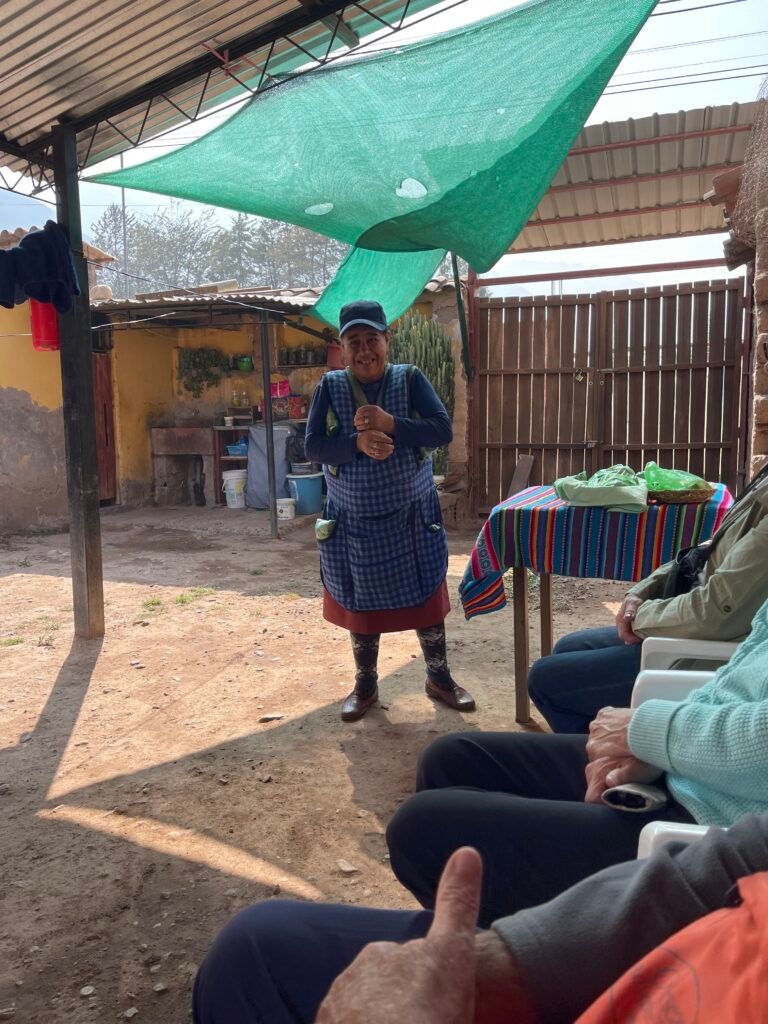
The lady who grows the coca leaves

1 lb bags of coca leaves

Chicken feet for sale
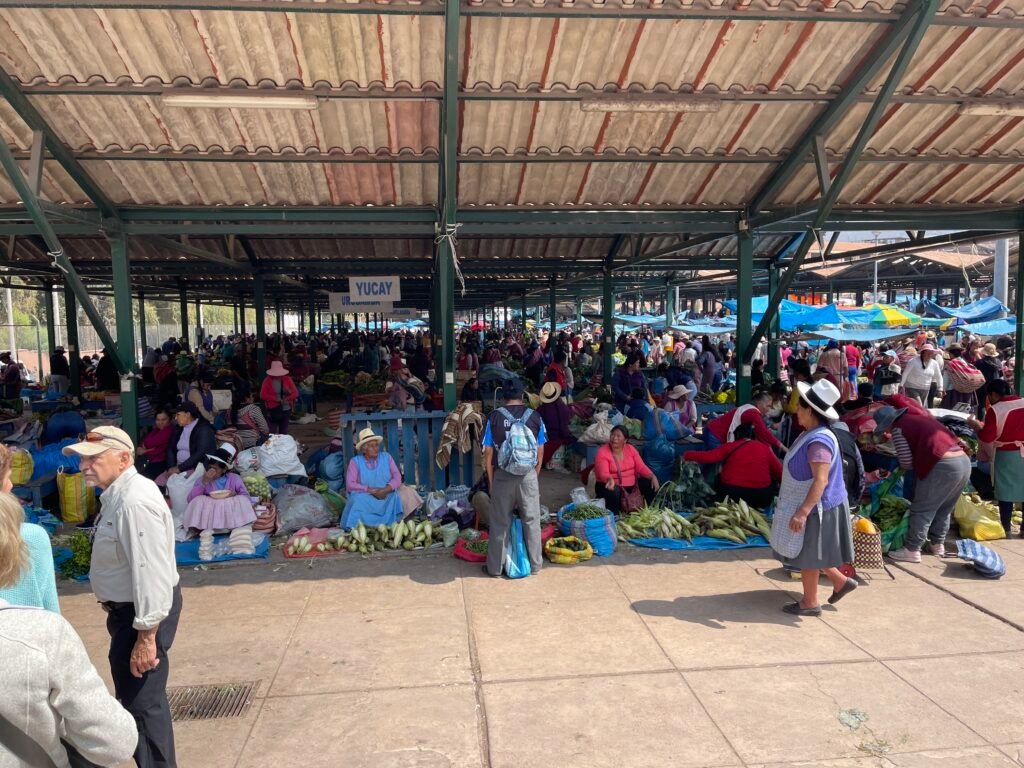
The market

A shopper
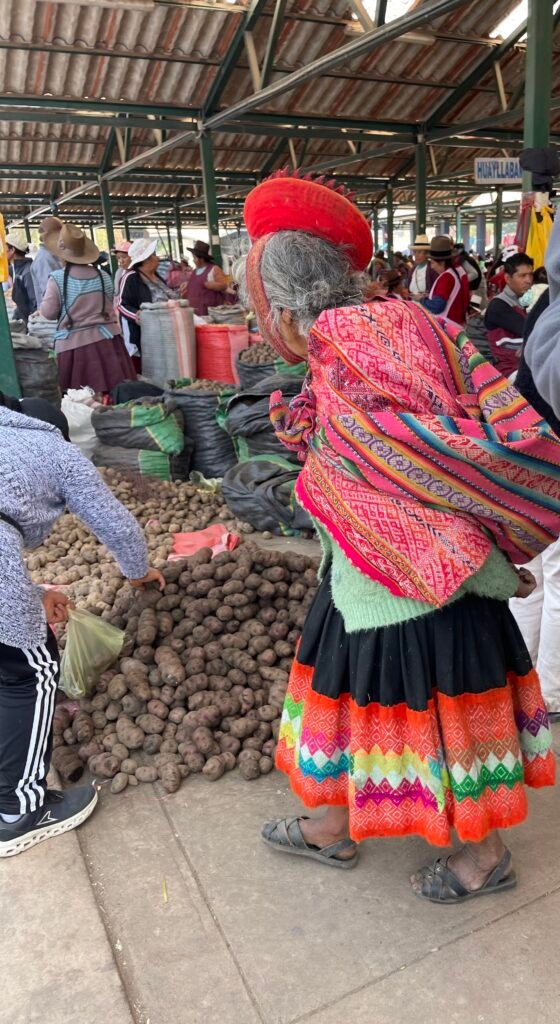
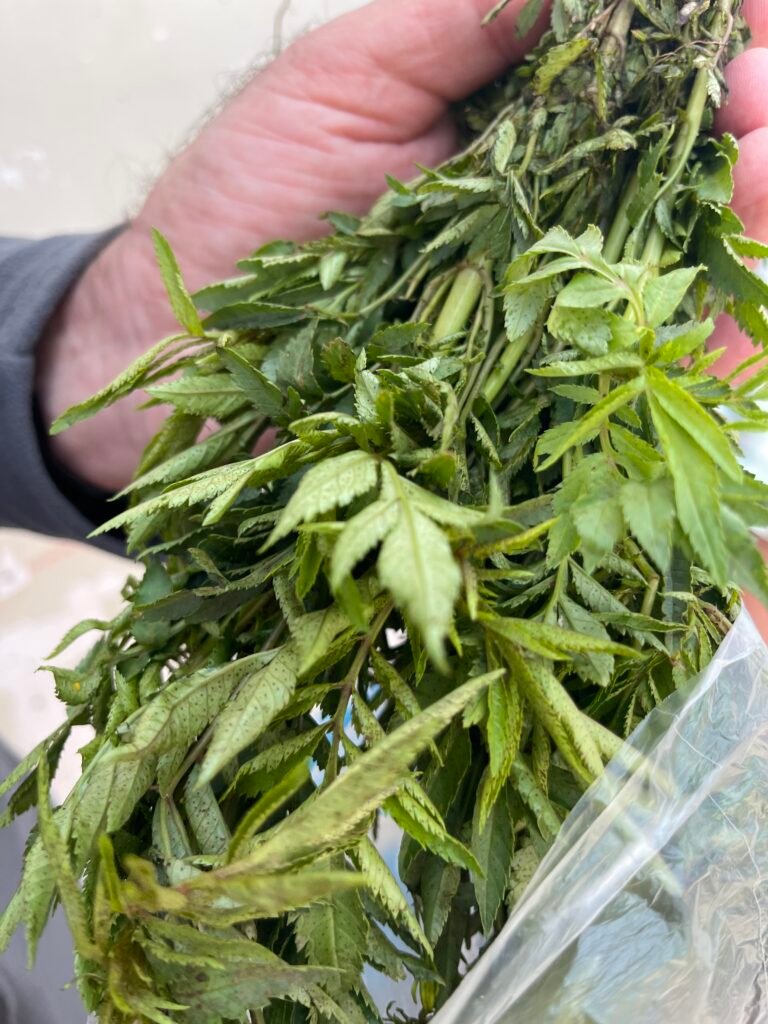
What we purchased to bring to the lunch
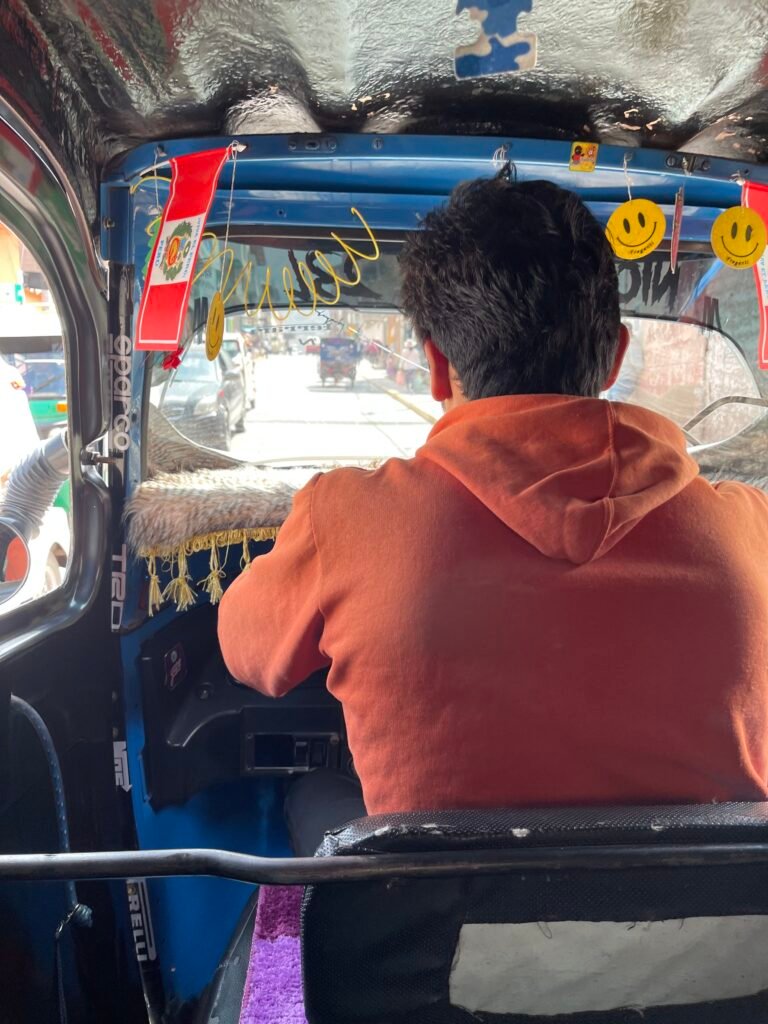
Riding in the little cab
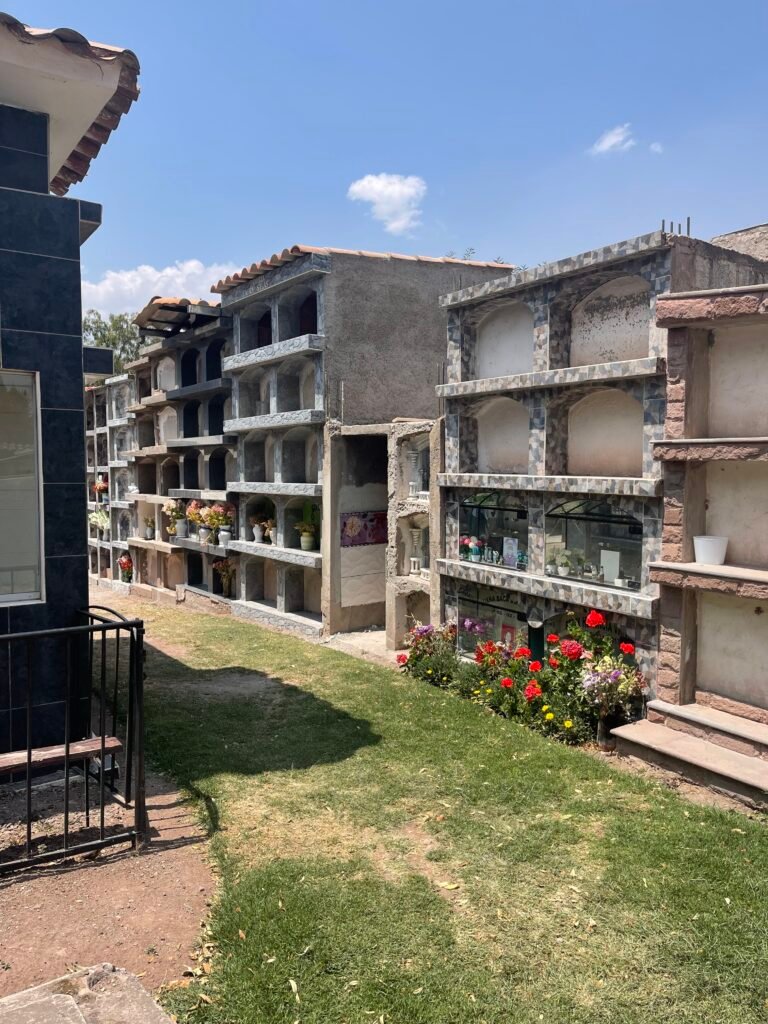
Cemetery

The beer lover
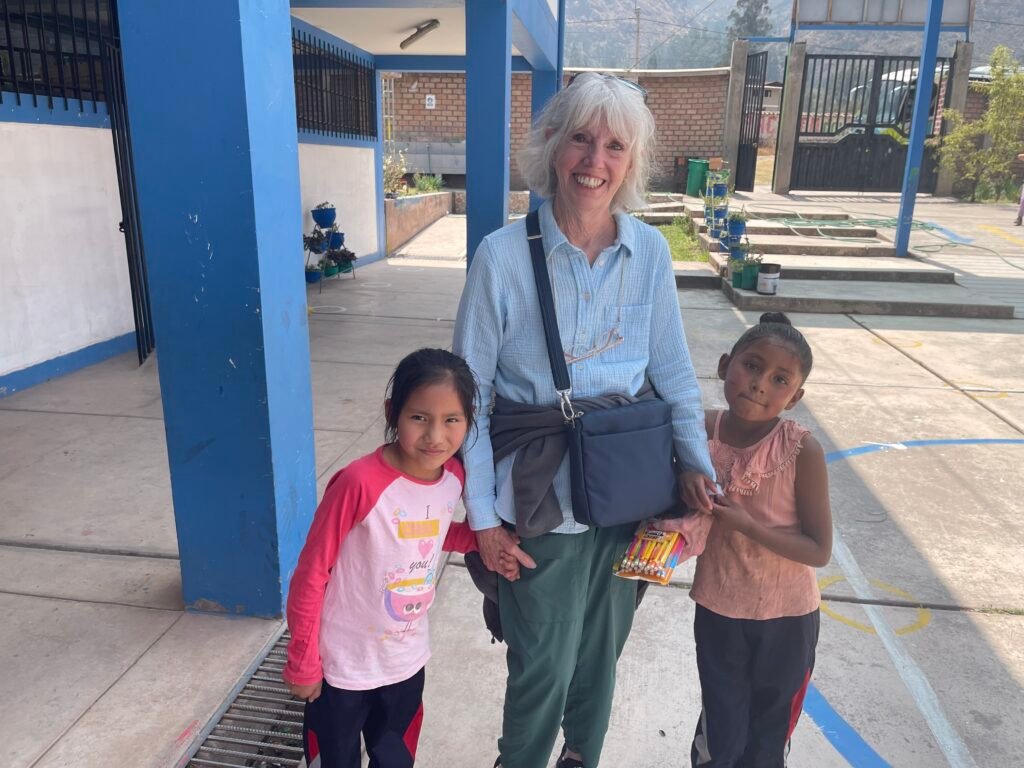
The little girls who grabbed my hands – Valentina and Luna.
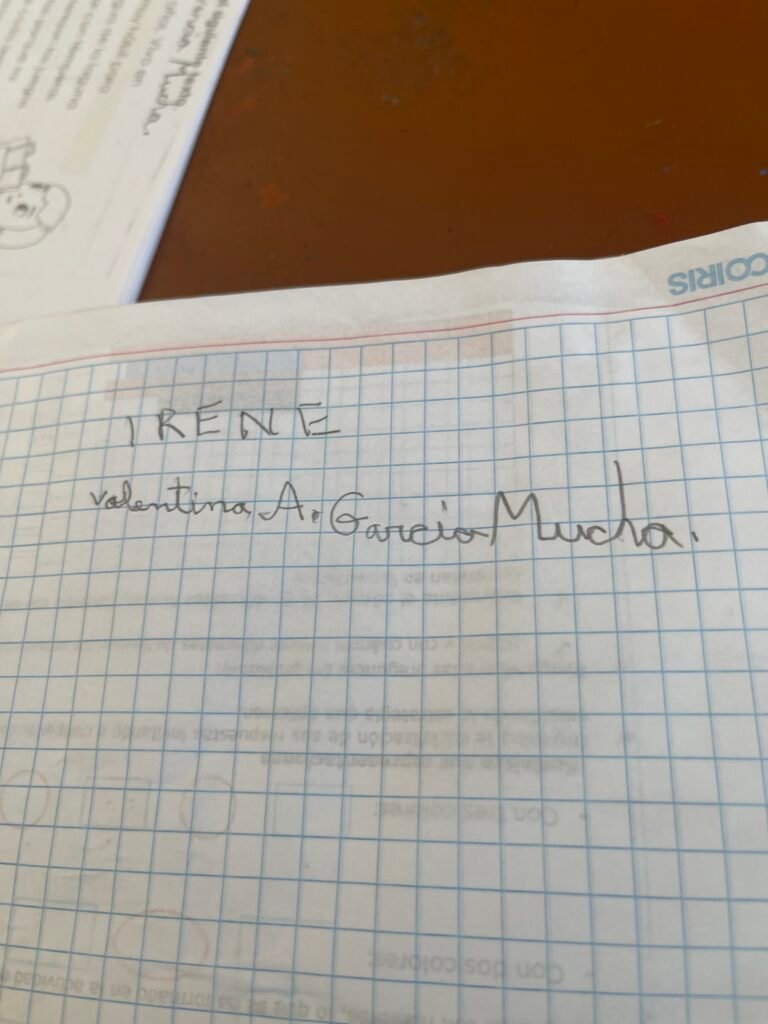
Our names together
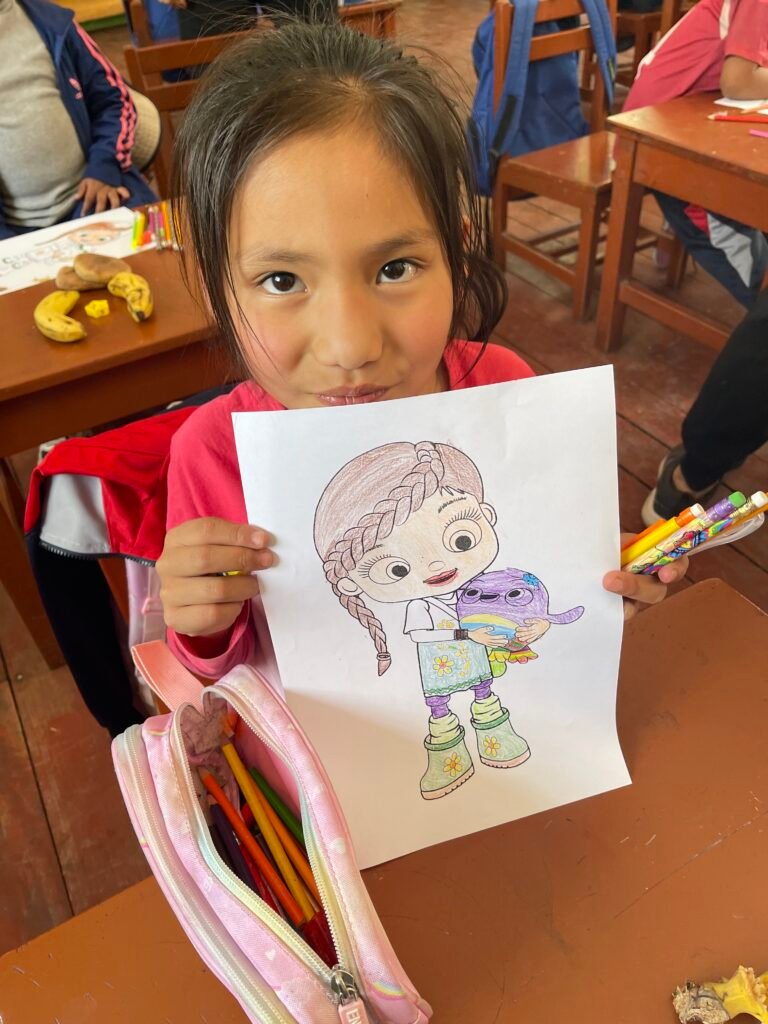
Our masterpiece!
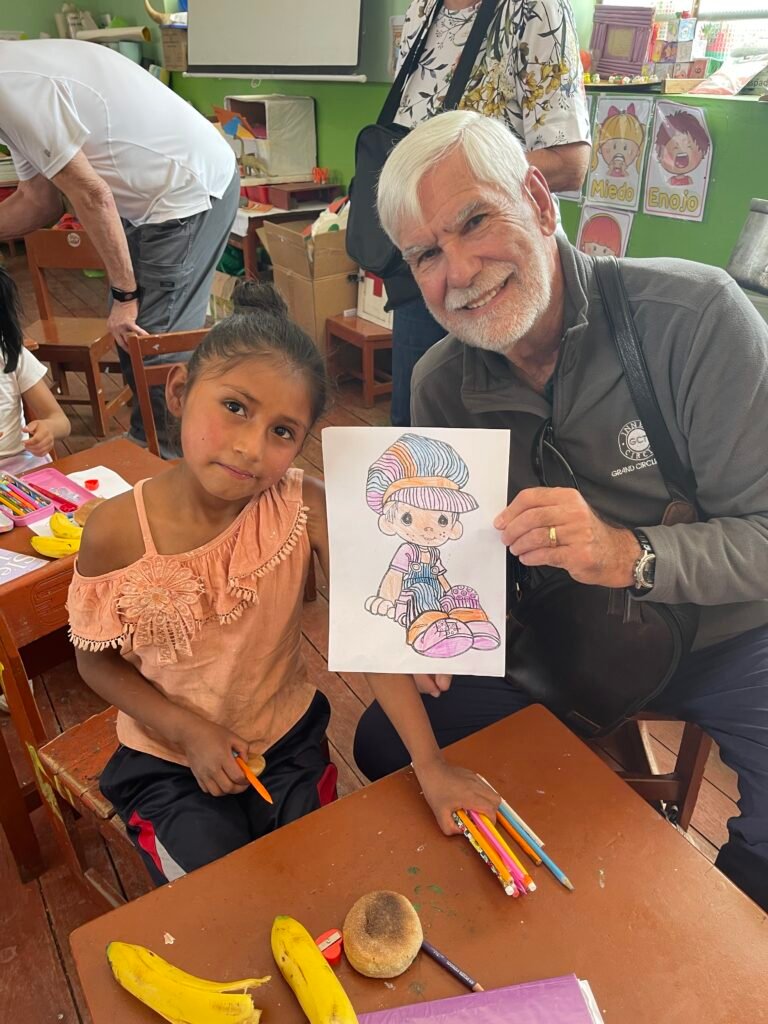
Allan with Luna
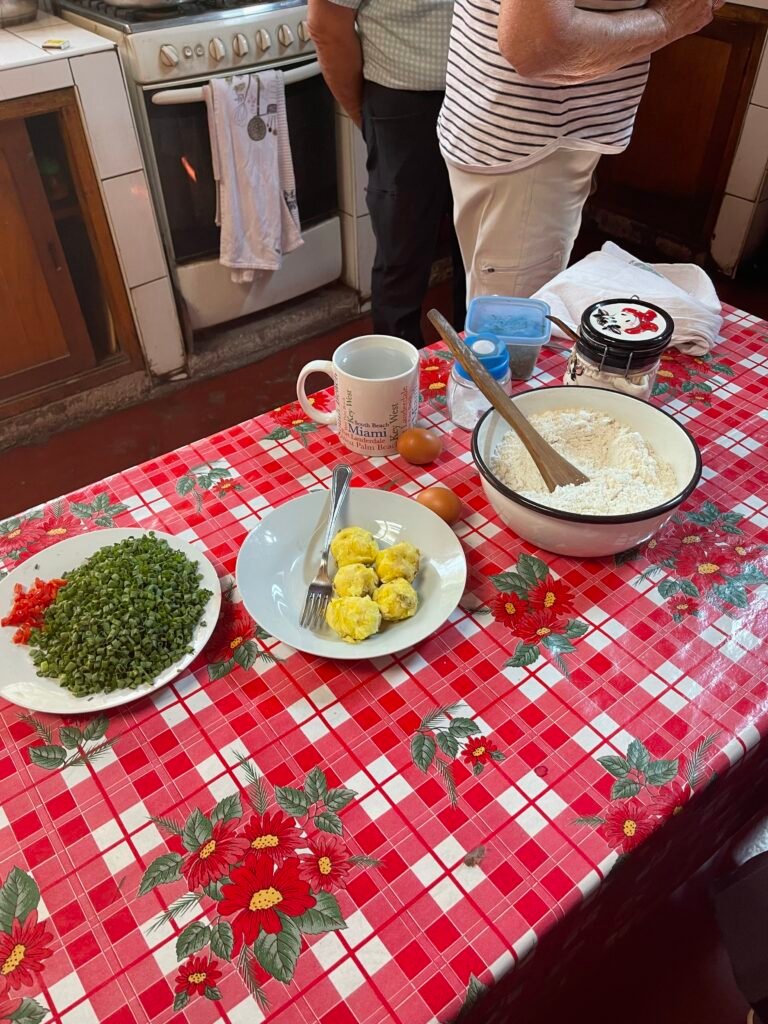
Preparing the tortillas
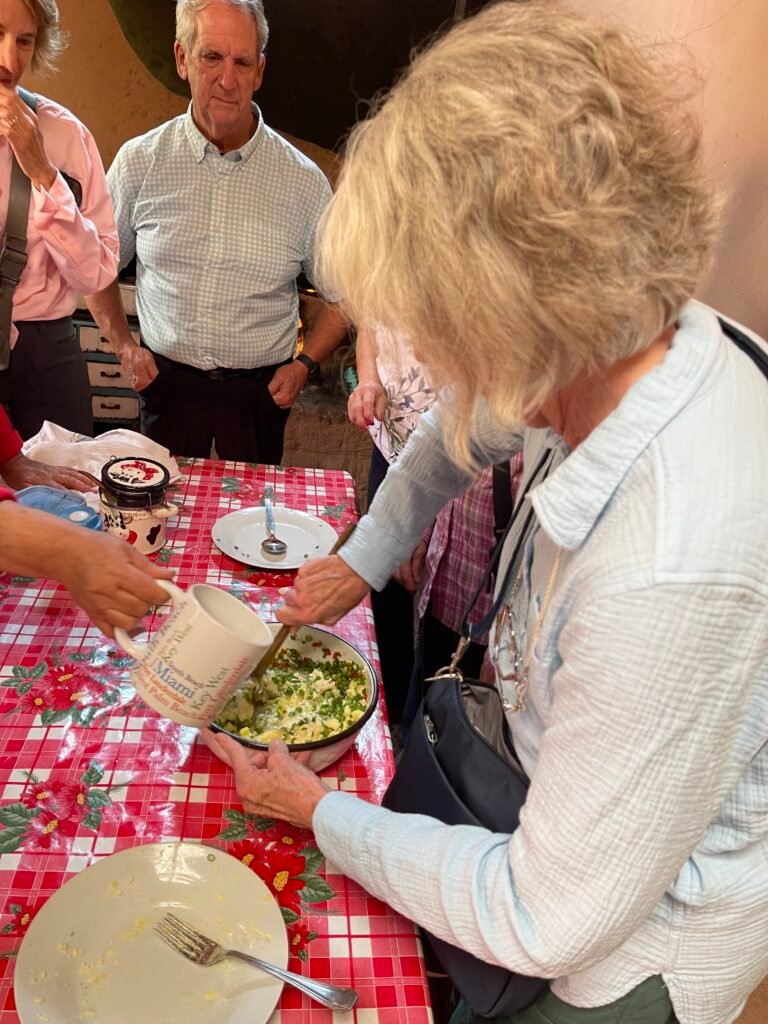
I’m stirring the batter
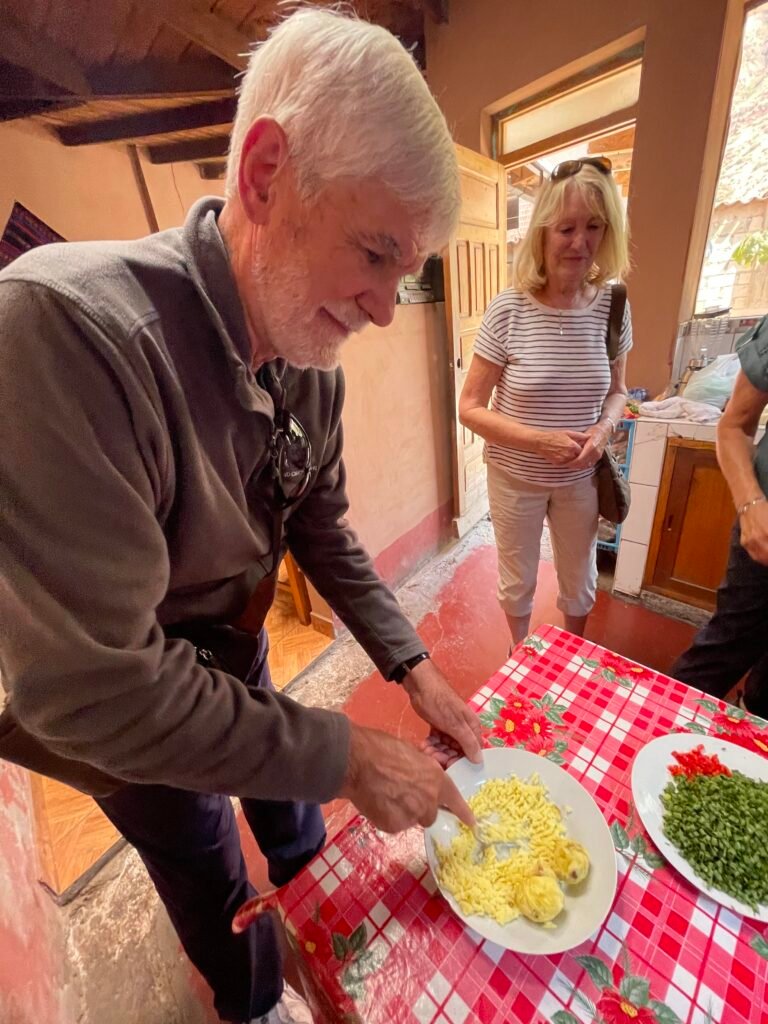
Allan mashing the potatoes that go into the batter

The tortillas cooking
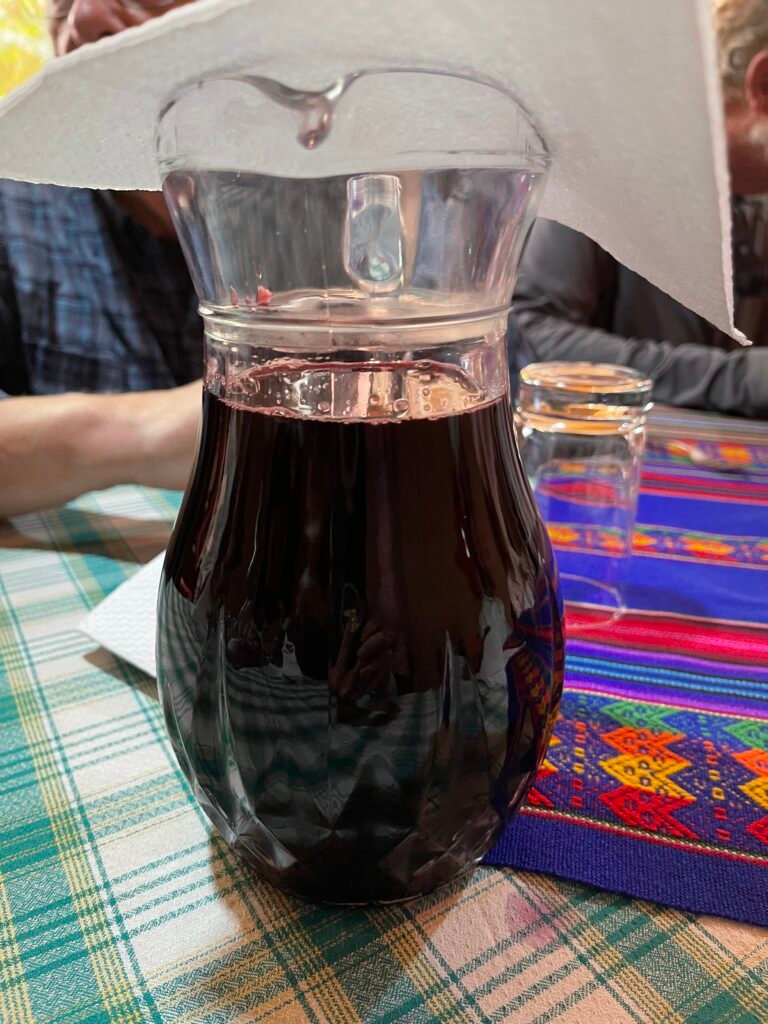
Drink made from black corn. Delicious
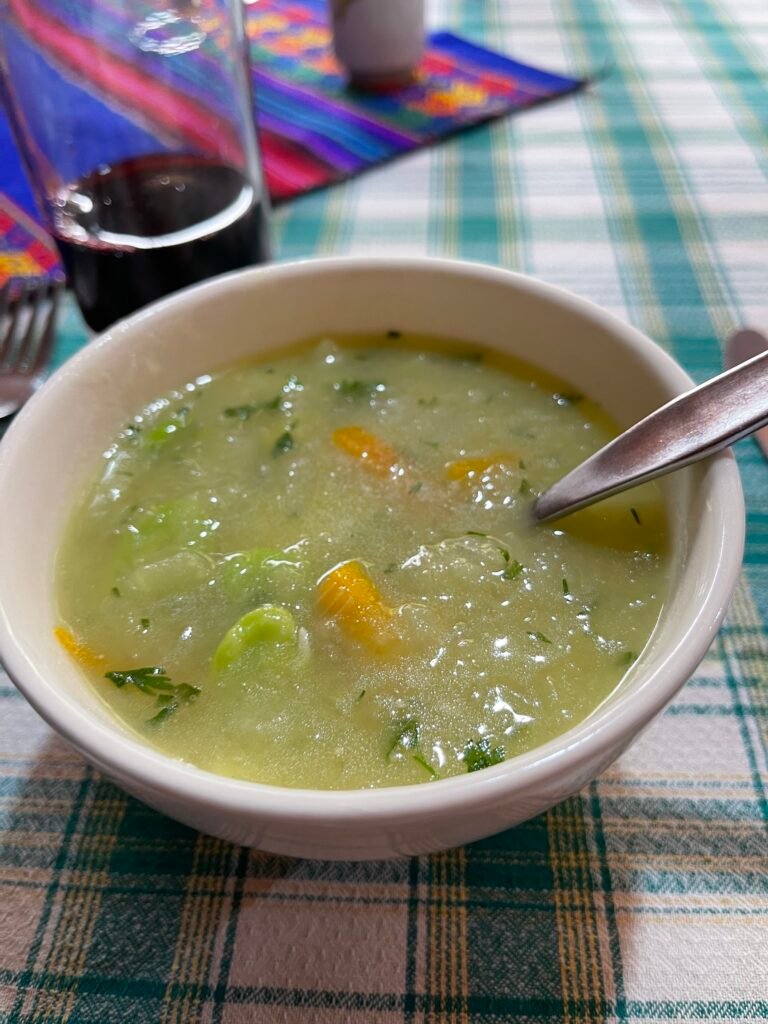
Soup made from some of the produce we purchased.
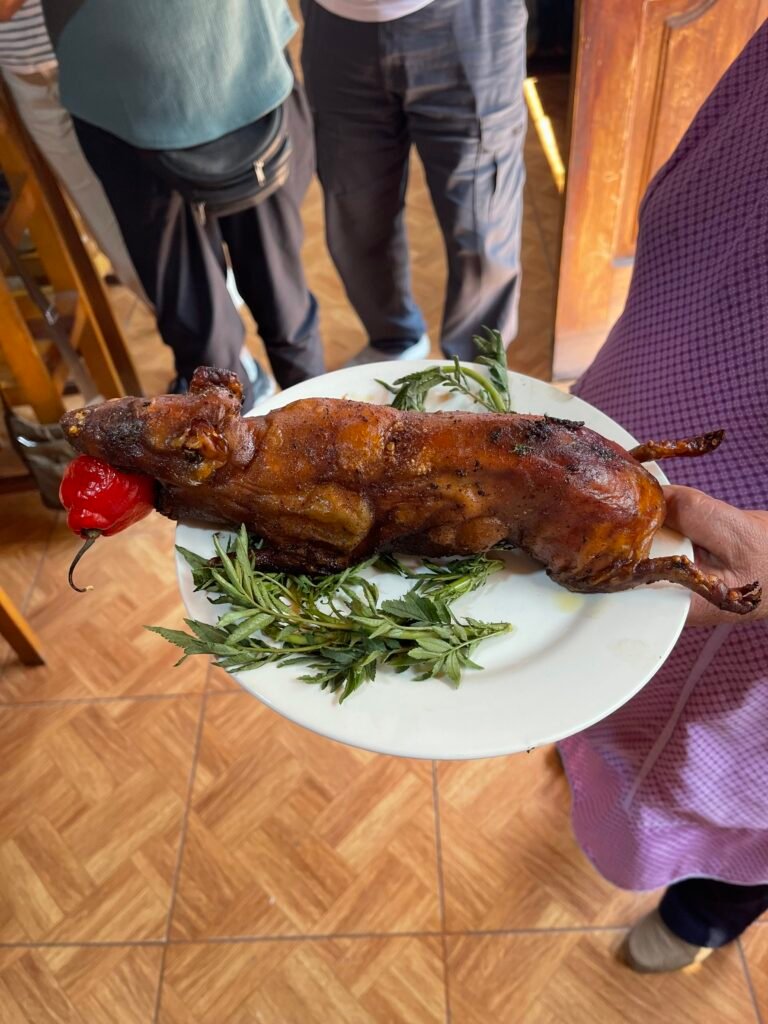
The highlight of the meal. Guinea pig!
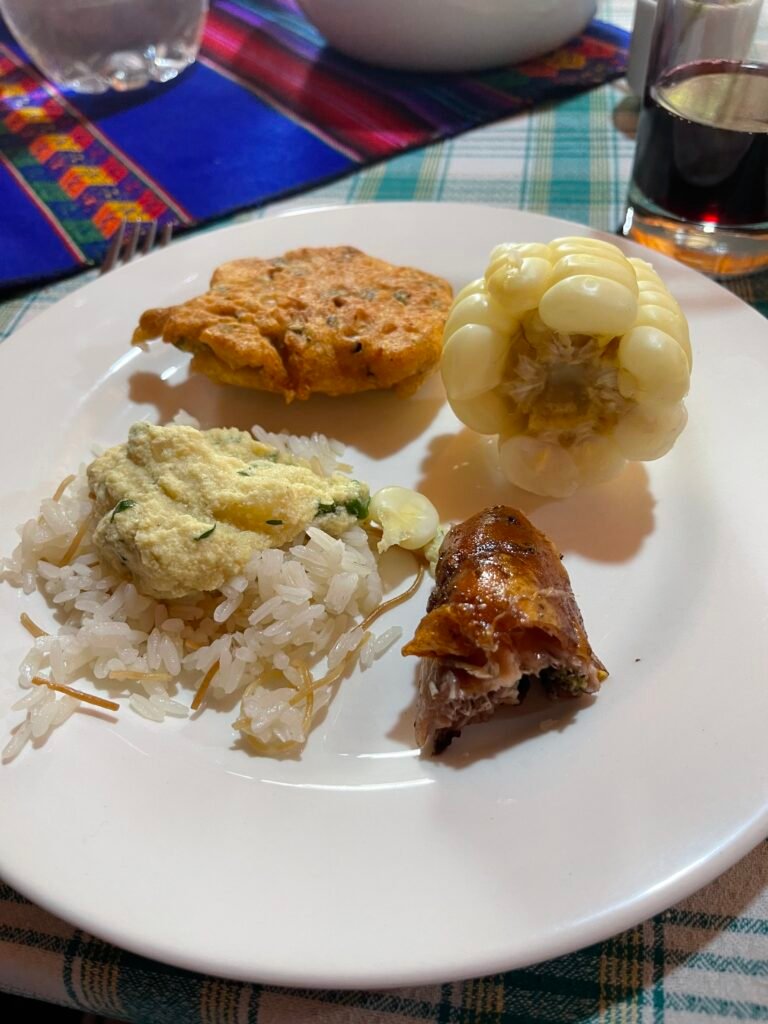
Our meal

A fruit. Don’t know the name
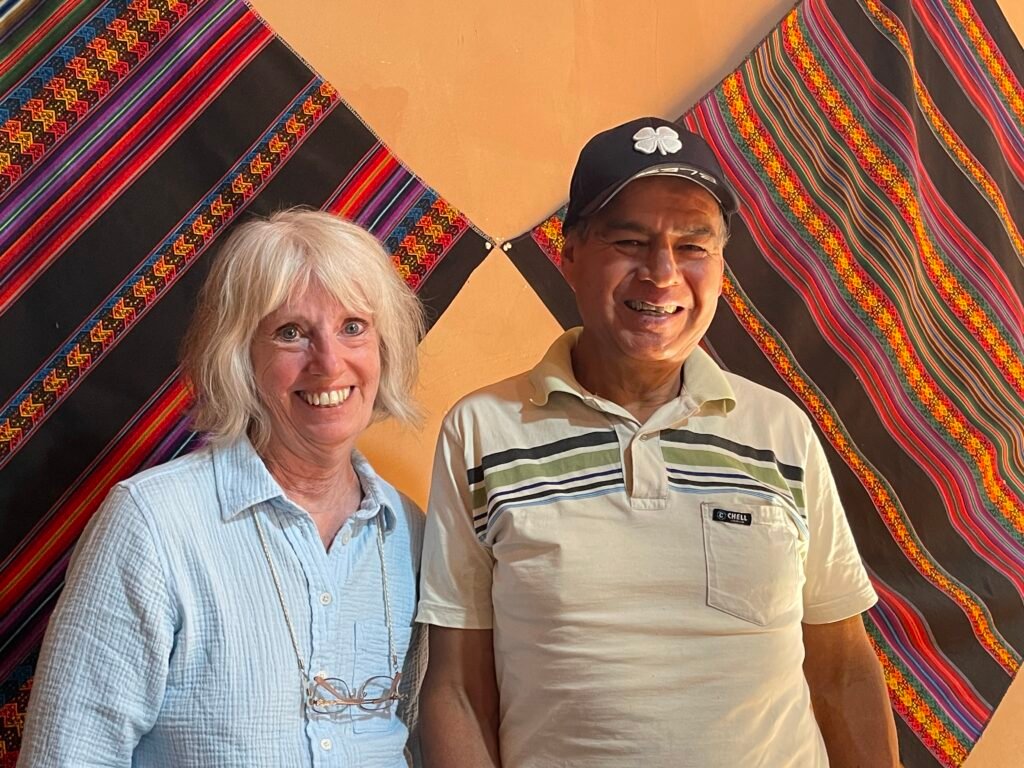
Me and the abuelo

The guinea pigs awaiting their fate
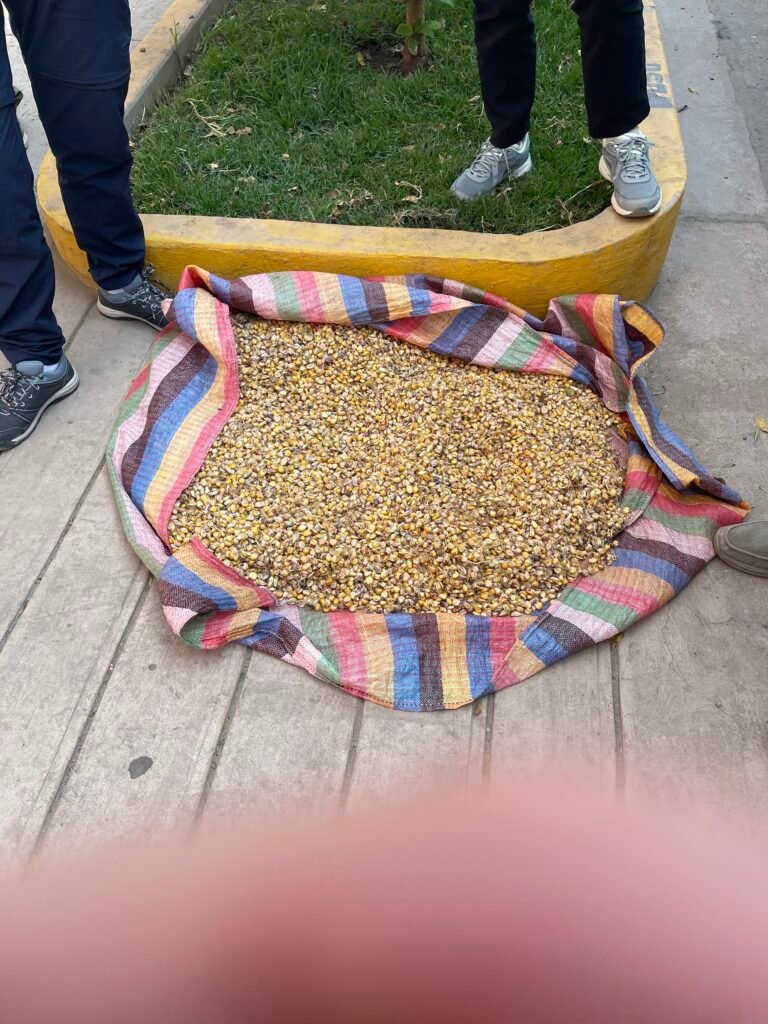
Corn sprouting to make the chicha.
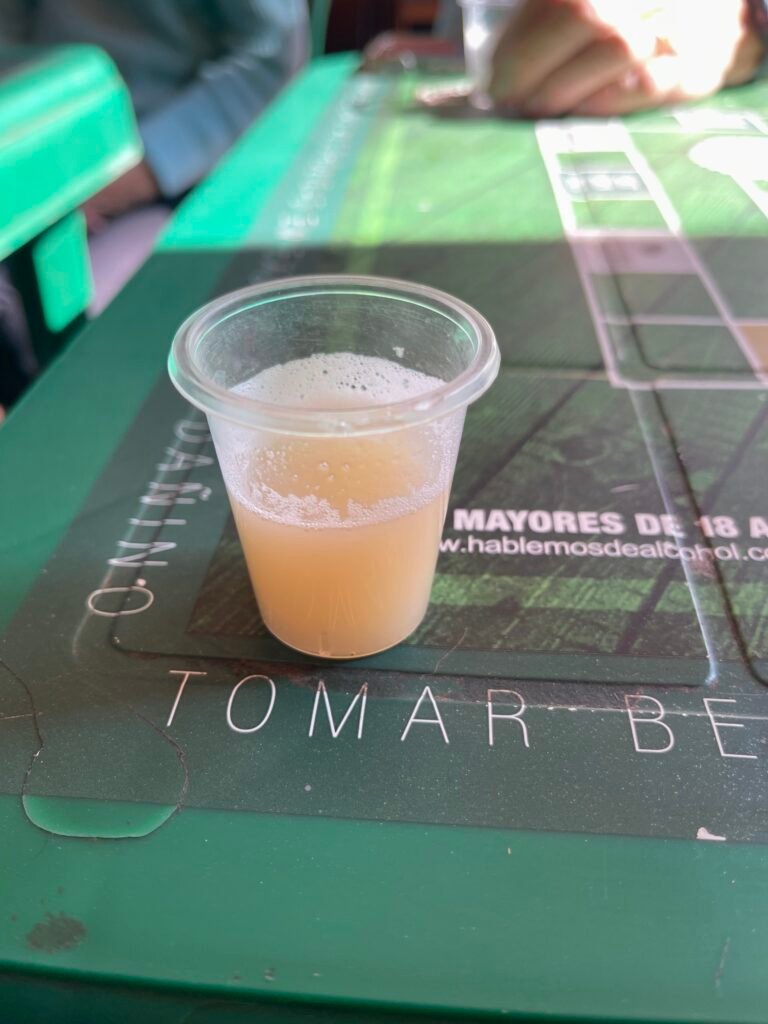
this was very tart
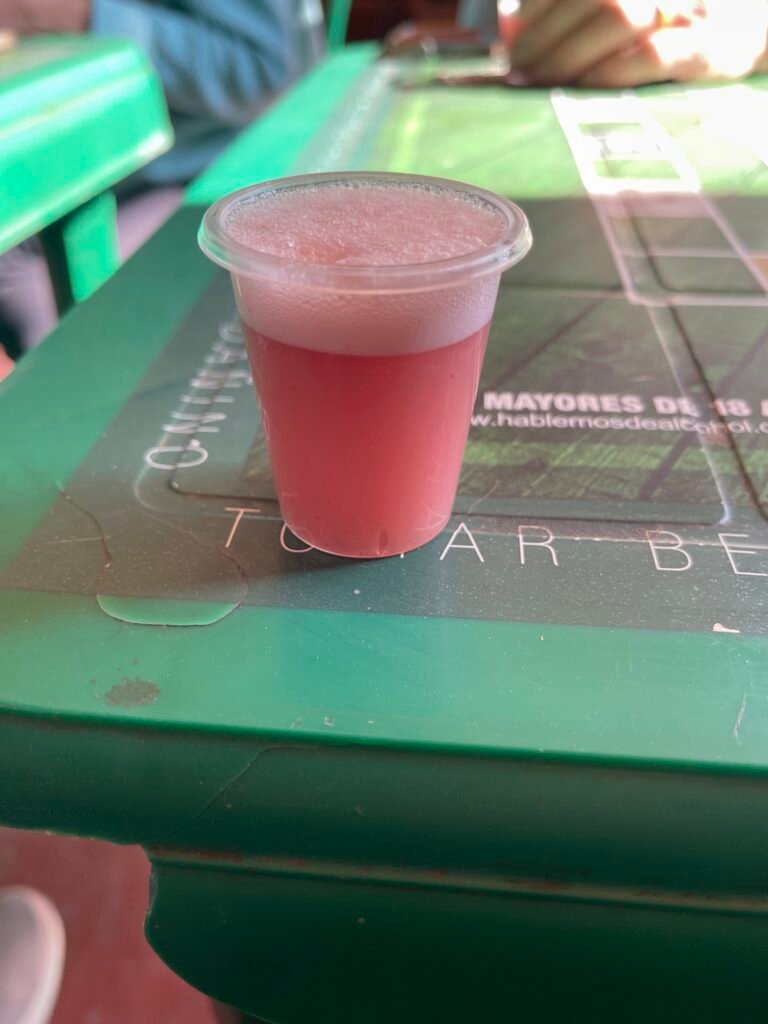
This was sweeter but not the greatest
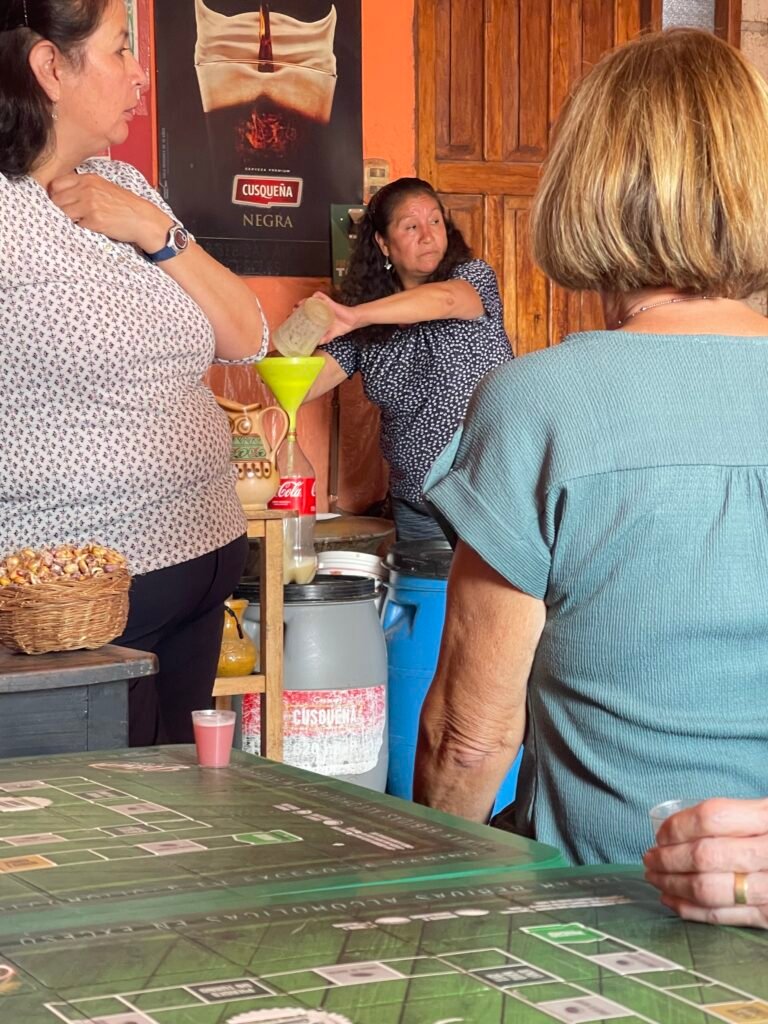

Red bag designating this is a chicheria.

Fingers crossed you don’t get sick. That fruit is a custard apple. Mmmmmm…..